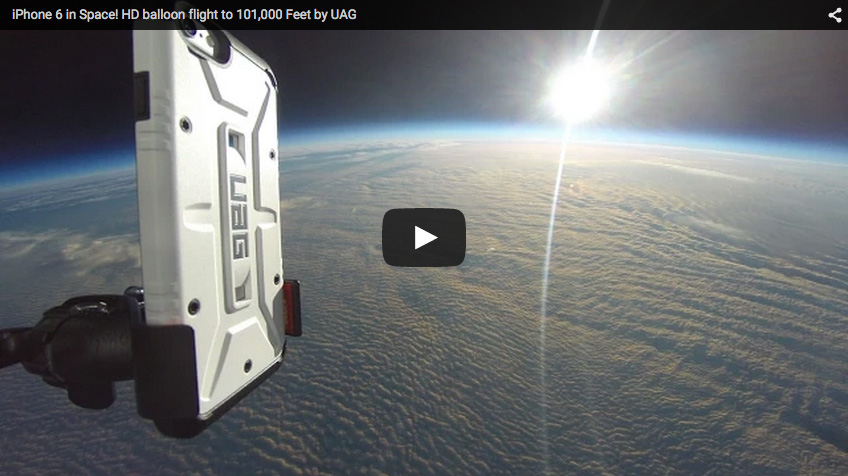What’s the best way to demonstrate the effectiveness of your product if you’re a smartphone case manufacturer? Put an iPhone in its protective case, strap it to a helium balloon and send it up into the stratosphere. And that’s exactly what Urban Armor Gear (UAG) did in their recent marketing effort.
The ultimate drop test
UAG strapped the encased iPhone 6, a pair of cameras, a GPS unit and a secondary GPS-enabled backup phone to the helium balloon. For more than 3 hours, the helium rig ascended until it reached an impressive 101,345 feet (or about 19.2 miles) above the earth, capturing phenomenal pictures of the blue-turned-black sky and the curvature of the earth.
According to the company, the smartphone was on and running when the helium balloon was released, but shut itself off using its built-in temperature safety feature as the thermometer dropped (where it ultimately hit -79°F).
A landing parachute was deployed upon the descent and the iPhone hit the ground 12 miles from where it was launched, reportedly in perfect working order.
So, did the marketing stunt work? Well, 2.4+ million hits on YouTube and counting would suggest it did.
Not the only phone to visit the stratosphere
Colin Furze produced a purely stunning video himself when he sent a boxes of HTC M8 phones up in a high-altitude helium balloon. The phones were simply rigged up in a styrofoam box and unlike the iPhone 6, the HTC M8s successfully filmed through the ascent.
Furze hit a record height of 106,500 feet (20.17 miles), producing the first cell phone images ever taken at that height, which captured the blackness of the stratosphere, the curve of the earth, and the moon and sun in the same shots. If that wasn’t enough flare, Furze set off fireworks from the helium balloon at 20,000 feet.
The originators
MIT students Oliver Yeh and Justin Lee claim to have been the first to ever launch a DIY space camera using helium balloons, cameras, and cell phones. The entire set-up ran them just under $150.
Their 2009 pioneering flight ascended to 98,000 feet (17.5 miles) and used time lapse photography in lieu of video in order to capture the event.
Sources: UAG, Colin Furze, 1337 Arts

